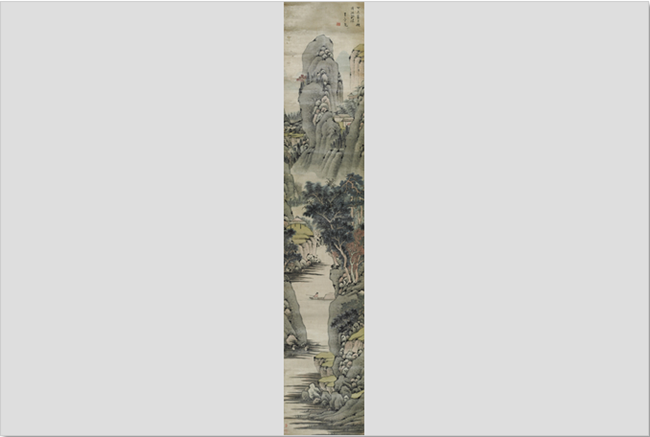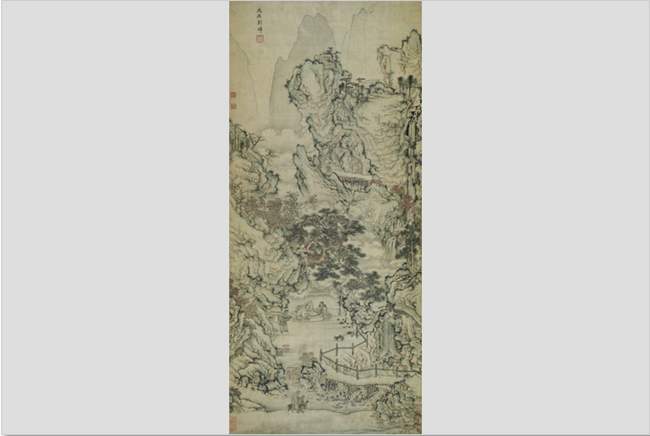Traditional Chinese paintings feature deep cultural connotations. The ancient Chinese worshipped nature and artists liked to vividly portray its essential qualities. This is true throughout Chinese painting history: from the earliest murals in the Stone Age to the engravings on the bronze wares, jade wares and bricks in the Shang, Zhou, Qin and Han dynasties; from portraits of people's lives on the tomb murals to the imperial paintings in the Five Dynasty and Tang and Song dynasties and even to the literati's paintings in the Ming and Sing dynasties and the modern age. The collections at the Shanxi Museum give a vivid presentation of the attention to nature in Chinese fine arts history.

An imitation of Ming Dynasty Painter Shen Zhou's landscape painting, by Ming and Sing Dynasty Painter Wang Hanging
Painting on paper, 292 cm in height and 55 cm in width
Wang Hanguang (1606-81), also known by the courtesy names of Biaopu and Heshan, called himself Sihe or Shuhe Daren. His hometown is Linyi, Shanxi province. He was a Jinshi — a successful candidate in the highest imperial examinations during the reign of the Chongzhen Emperor of the Ming Dynasty. He took a number of official posts during the following Qing Dynasty. He was an expert in the study of ancient classics like the Book of Changes. A renowned poet and writer in his times, Wang was also a famed painter. His works drew inspiration from artists in the Jin, Song and Yuan dynasties, and show a special respect for Yuan painter Wu Zhen and a deep love of landscape paintings. His works feature simplicity and freedom of expression, never succumbing to worldly tastes. He liked to present landscapes with smooth strokes and lines, creating a sense of solitude and serenity.

Colored landscape by Qing Dynasty painter Liu Zhang
Painting on silk cloth, 141 cm in height and 51 cm in width
With the courtesy name of Yutang, Li Zhang (1667-?) also called himself Jiefu, Yanxia Sanren and Qiaoyun Shanren. He was a native of Yangqu, Shanxi province. After succeeding in the provincial examinations, he took the post of mayor of Shenzhe in Zhili province (today's Hebei province). He devoted much of his energy to writing novels and was a renowned novelist in the early Qing Dynasty. He was also a master in calligraphy, painting and music. He left only a small number of paintings to the world, which feature a high aesthetic taste, elegance, simplicity and a longing for an unworldly life.
